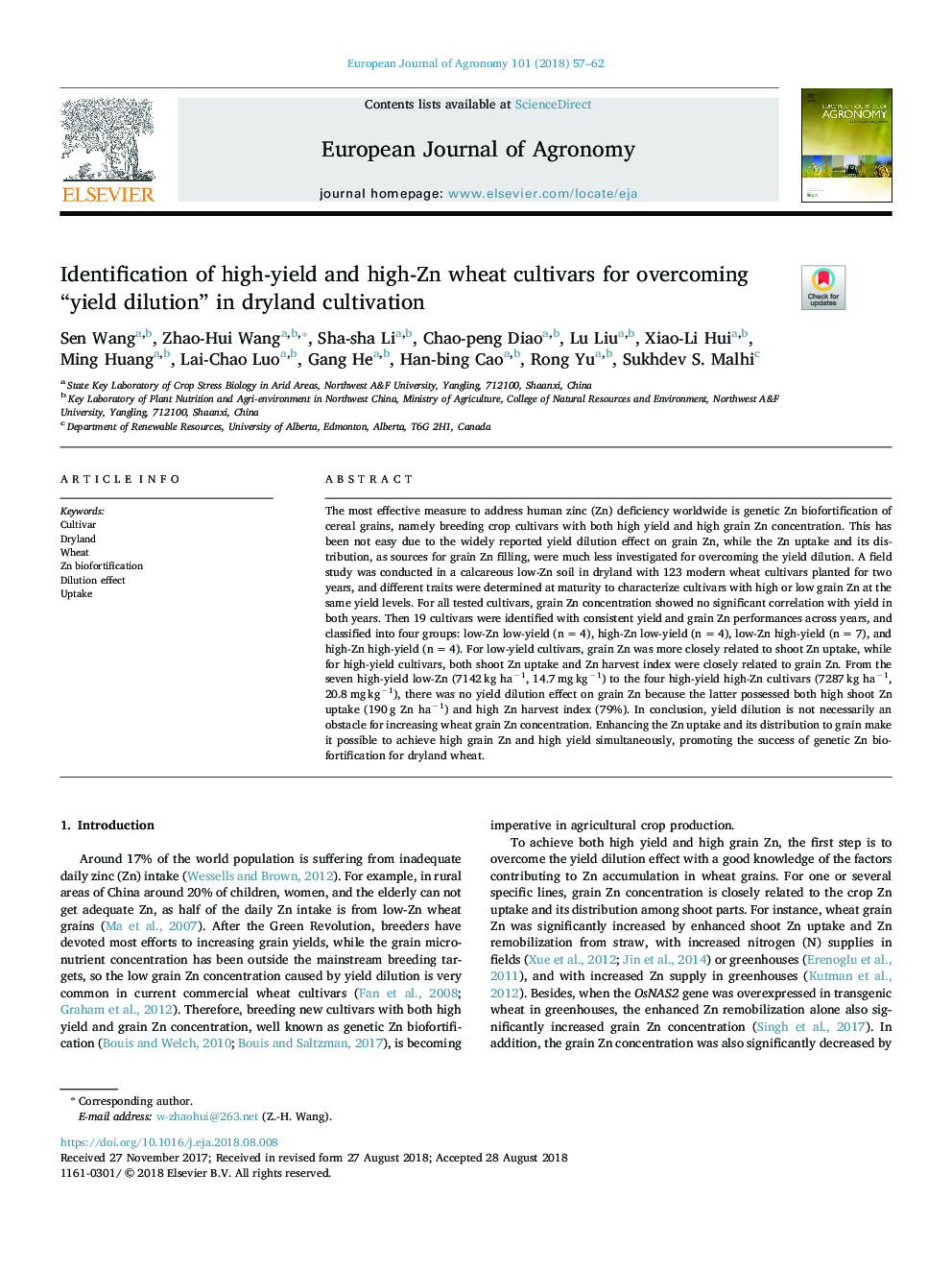| کد مقاله | کد نشریه | سال انتشار | مقاله انگلیسی | نسخه تمام متن |
|---|---|---|---|---|
| 10138734 | 1645900 | 2018 | 6 صفحه PDF | دانلود رایگان |
عنوان انگلیسی مقاله ISI
Identification of high-yield and high-Zn wheat cultivars for overcoming “yield dilution” in dryland cultivation
ترجمه فارسی عنوان
شناسایی ارقام گندم با عملکرد بالا و زیاد زین برای غلبه بر راندمان تولید محصول در کشت دیم
دانلود مقاله + سفارش ترجمه
دانلود مقاله ISI انگلیسی
رایگان برای ایرانیان
کلمات کلیدی
موضوعات مرتبط
علوم زیستی و بیوفناوری
علوم کشاورزی و بیولوژیک
علوم زراعت و اصلاح نباتات
چکیده انگلیسی
The most effective measure to address human zinc (Zn) deficiency worldwide is genetic Zn biofortification of cereal grains, namely breeding crop cultivars with both high yield and high grain Zn concentration. This has been not easy due to the widely reported yield dilution effect on grain Zn, while the Zn uptake and its distribution, as sources for grain Zn filling, were much less investigated for overcoming the yield dilution. A field study was conducted in a calcareous low-Zn soil in dryland with 123 modern wheat cultivars planted for two years, and different traits were determined at maturity to characterize cultivars with high or low grain Zn at the same yield levels. For all tested cultivars, grain Zn concentration showed no significant correlation with yield in both years. Then 19 cultivars were identified with consistent yield and grain Zn performances across years, and classified into four groups: low-Zn low-yield (nâ=â4), high-Zn low-yield (nâ=â4), low-Zn high-yield (nâ=â7), and high-Zn high-yield (nâ=â4). For low-yield cultivars, grain Zn was more closely related to shoot Zn uptake, while for high-yield cultivars, both shoot Zn uptake and Zn harvest index were closely related to grain Zn. From the seven high-yield low-Zn (7142âkg haâ1, 14.7âmgâkgâ1) to the four high-yield high-Zn cultivars (7287âkg haâ1, 20.8âmgâkgâ1), there was no yield dilution effect on grain Zn because the latter possessed both high shoot Zn uptake (190âg Zn haâ1) and high Zn harvest index (79%). In conclusion, yield dilution is not necessarily an obstacle for increasing wheat grain Zn concentration. Enhancing the Zn uptake and its distribution to grain make it possible to achieve high grain Zn and high yield simultaneously, promoting the success of genetic Zn biofortification for dryland wheat.
ناشر
Database: Elsevier - ScienceDirect (ساینس دایرکت)
Journal: European Journal of Agronomy - Volume 101, November 2018, Pages 57-62
Journal: European Journal of Agronomy - Volume 101, November 2018, Pages 57-62
نویسندگان
Sen Wang, Zhao-Hui Wang, Sha-sha Li, Chao-peng Diao, Lu Liu, Xiao-Li Hui, Ming Huang, Lai-Chao Luo, Gang He, Han-bing Cao, Rong Yu, Sukhdev S. Malhi,
